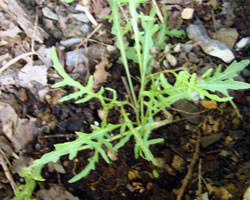 Courtesy the California Department of Food and Agriculture California farms, such as this one in Monterey County, will be affected by the research peformed by the state’s new Scientific Panel on Environmental Farming. |
The California Department of Food and Agriculture recently held its first meeting on environmental farming with its five-member scientific advisory panel. The panel formed to advise state agencies on sustainable agriculture.
As California leads the pack in legislation surrounding environmental protection, food safety and climate change, the Scientific Panel on Environmental Farming will help define that role by providing agricultural research to regulatory agencies, says Steve Lyle, CDFA’s director of public affairs. The panel will review data regarding the impact that agriculture has on the environment and make recommendations to appropriate state agencies. In addition, the panel will publicly document agricultural activities that produce net benefits for the environment and ecosystems.
CDFA, working with American Farmland Trust, the state board of agriculture and hundreds of stakeholders, recently completed a two-year process of public meetings to complete Ag Vision 2030, a report that highlights sustainable agriculture issues. The panel will focus on these issues, which include requirements for environmental flow (or the natural water needed to maintain ecosystems), water salinity and air quality.
“California’s farmers and ranchers operate in a regulatory environment that contributes to the safety and innovation of our food supply and protects our natural habitat,” Lyle says. “All of California’s farm families will benefit from this panel, which will provide research to help document the impact that agriculture has on the environment, providing greater transparency to the rule-making process of regulatory agencies.”
One of the first priorities of the panel is to research an environmental impact report, drafted by the Central Valley Regional Water Quality Control Board, on the state’s dairy manure digester and co-digester facilities.
Three members of the panel are appointed by California’s Secretary of Food and Agriculture to represent production agriculture. One member is appointed by the Secretary of the state Environmental Protection Agency to represent human health and environmental science. One member is appointed by the Secretary of the state Natural Resources Agency to represent resource management.
“This panel will bring together diverse expertise to educate and consult with state agencies on environmental issues paramount to sustainable agricultural production,” says CDFA Secretary A.G. Kawamura. “While feeding the nation, California agriculture strives to build consensus to address multiple complex issues confronting the state’s 80,000 farmers, like resource management, invasive species, water, local and organic food production, and environmental stewardship.”















